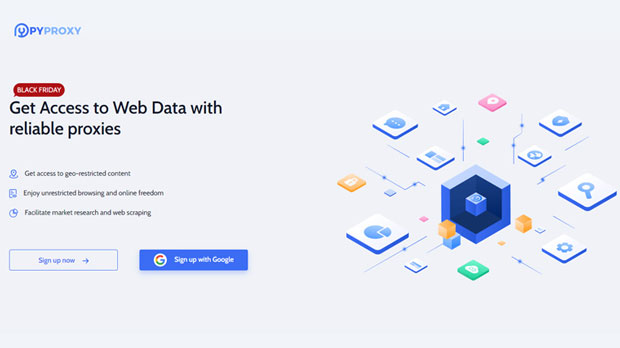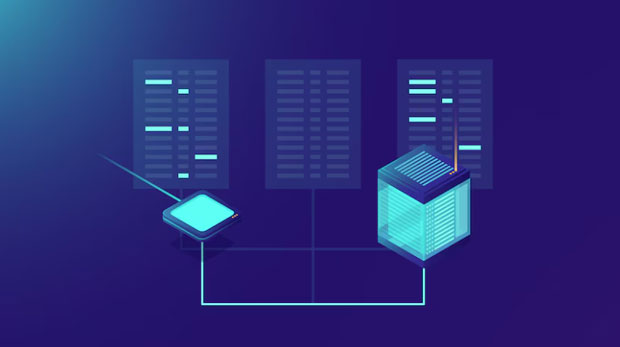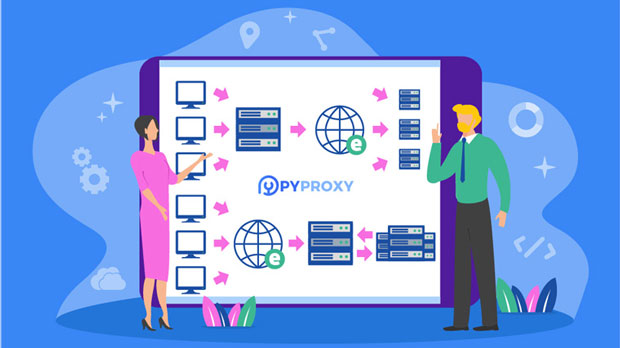Dynamic residential IP addresses are commonly used in modern digital infrastructures, offering significant advantages in terms of flexibility, privacy, and security. However, when deployed in high traffic environments, they face unique challenges regarding stability and reliability. In this article, we will analyze the factors that influence the performance of dynamic residential IP addresses in high traffic scenarios, explore their benefits and limitations, and offer strategies to mitigate potential issues. The goal is to provide valuable insights for customers who rely on this technology for a variety of applications such as digital marketing, e-commerce, and data scraping. Understanding Dynamic Residential IP AddressesDynamic residential IP addresses are internet protocol addresses assigned by Internet Service Providers (ISPs) to residential users. Unlike static IPs, which remain constant over time, dynamic IPs change periodically, making it difficult for external parties to trace them back to a specific user. These IPs are often used for tasks that require anonymity, like web scraping, ad verification, or bypassing geo-restrictions.The main advantage of dynamic residential IPs is their natural appearance to websites, as they are issued from real residential locations, unlike datacenter IPs that are typically blocked by websites due to their association with bot traffic. However, high traffic environments can complicate the consistent functionality of dynamic IPs, affecting their stability.Factors Influencing Stability in High Traffic EnvironmentsSeveral factors play a crucial role in determining the stability of dynamic residential IP addresses when subjected to high traffic volumes:1. Frequency of IP RotationIn high traffic situations, dynamic IPs often rotate more frequently to avoid being detected or blocked by websites. While IP rotation enhances anonymity and reduces the risk of blacklisting, excessive frequency of rotation can lead to interruptions in connections, latency issues, and the disruption of sessions that require longer persistence.2. ISP Load and Network CongestionThe performance of dynamic residential IPs heavily depends on the infrastructure of the ISP. High traffic environments can cause network congestion, resulting in slower response times, packet loss, or even IP disconnections. In some cases, the ISP may limit the number of IPs available, leading to bottlenecks and degraded stability for users.3. Website Blocking MechanismsWebsites constantly monitor and filter incoming traffic to prevent abuse. When large volumes of requests come from residential IPs, they may detect suspicious patterns such as a high frequency of changes in IP addresses, and as a result, block or rate-limit access. This becomes a challenge in high traffic environments, as the risk of being blocked or banned increases significantly.4. Dynamic IP Pool SizeThe size of the dynamic IP pool offered by the ISP is another key factor in determining stability. In cases where the pool is small, the available IPs may be exhausted quickly under heavy traffic conditions, leading to frequent rotations and interruptions. Larger IP pools provide better stability and reduced risk of hitting these limits.5. Session PersistenceIn certain applications, maintaining a consistent IP address for the duration of a session is crucial. For example, activities like e-commerce transactions or account logins often require session persistence to prevent interruptions or security issues. High traffic environments may force the system to rotate IPs frequently, breaking session persistence and causing instability.Challenges Faced by Dynamic Residential IPs in High TrafficDynamic residential IPs, while offering anonymity and security, come with several challenges when used in high traffic environments:1. Increased Risk of DetectionHigh traffic activities that generate large volumes of requests using dynamic residential IPs increase the chances of detection by advanced anti-bot systems. These systems can identify unusual traffic patterns, such as frequent IP changes or abnormal request frequency, and flag these as suspicious. This can result in temporary or permanent blocking, causing major disruptions.2. Reduced IP Address Pool AvailabilityHigh demand for dynamic residential IPs in peak traffic periods often leads to rapid depletion of available IP addresses. This creates delays in obtaining new IPs, increases the rotation rate, and can result in degraded service quality, making it difficult to maintain stable access over time.3. Latency IssuesIn high traffic environments, the network infrastructure supporting dynamic residential IP addresses may face strain, leading to higher latency. Increased latency can negatively affect performance, particularly in applications requiring real-time data processing, such as stock trading or streaming.4. Shortened Connection TimesDynamic IPs, particularly when rotated frequently, may cause connections to drop or timeout. This is a significant issue when performing long-term tasks that require stable and continuous connectivity. The disconnects can affect user experience, especially in applications where long sessions are essential.Strategies to Improve Stability in High Traffic EnvironmentsDespite these challenges, there are several strategies to improve the stability of dynamic residential IPs in high traffic environments:1. Use of Proxy NetworksOne of the most effective ways to improve stability is by utilizing proxy networks. By using a proxy service, users can access a large pool of dynamic residential IPs, which reduces the risk of IP exhaustion and enhances session persistence. Proxy networks also enable users to manage IP rotation frequency and avoid overloading any single IP address.2. Traffic Throttling and Session ControlImplementing traffic throttling and session control strategies can help manage the flow of requests and prevent excessive load on the dynamic residential IPs. By limiting the frequency of requests and controlling session durations, users can reduce the chances of detection and avoid IP bans or rate limits.3. Selection of High-Quality ISPsChoosing ISPs with robust network infrastructures and a large pool of dynamic residential IPs can significantly improve stability. High-quality ISPs are less likely to experience congestion and can provide a more reliable connection even in high traffic environments. It's important to evaluate the quality of the ISP's service before committing to their IP solutions.4. Geographic Distribution of IPsDistributing traffic across geographically diverse IP addresses can help improve stability. By utilizing IPs from different regions, users can avoid the risk of triggering geo-restriction blocks or region-specific limits. This also ensures a smoother experience when accessing global services.5. Use of Intelligent Traffic Management SystemsAdvanced traffic management systems can be used to intelligently route requests through the most stable and least congested IPs in real-time. These systems can automatically detect and mitigate issues such as IP exhaustion, network congestion, and excessive rotation rates, ensuring that the dynamic residential IP addresses remain stable under high traffic.The stability of dynamic residential IP addresses in high traffic environments is influenced by various factors, including the frequency of IP rotation, ISP network load, and website blocking mechanisms. While dynamic residential IPs provide anonymity and flexibility, they face challenges in maintaining stability under heavy traffic conditions. By employing strategies such as proxy networks, traffic throttling, and intelligent traffic management, users can enhance the reliability and performance of dynamic residential IPs. These measures can ensure a more stable and consistent experience in high traffic scenarios, making them a valuable tool for a variety of online applications.
Sep 16, 2025



































































